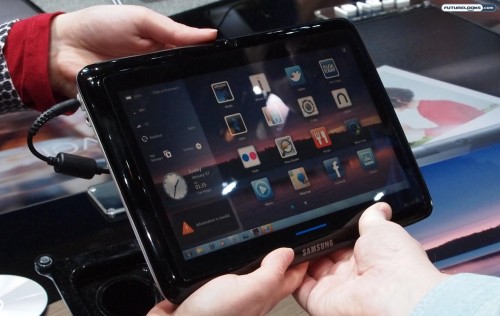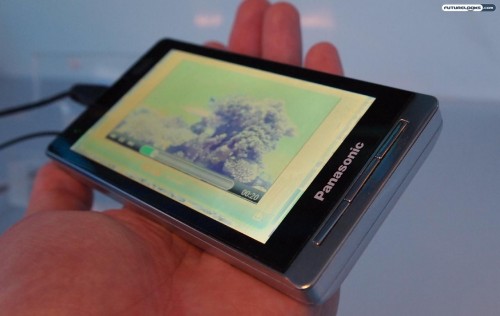Samsung Sliding PC 7 Series Tablet with Keyboard

It wouldn’t be at all fair to say that Samsung is copying Asus with this particular product, since they were both announced at the same CES, but you can see how these two items are remarkably similar. Remember that Asus Eee Pad Slider I was talking about? The Samsung Sliding PC 7 Series is kind of the same thing.
Like the Asus, the Samsung works as a tablet like how you’d expect it to do, but there’s also a full slide-out QWERTY keyboard hiding under there. With the keyboard exposed, you get closer to a notebook or netbook experience. One of the main differences between this hybrid and the Asus variant, though, is that it runs on Windows 7.

Instead of going with NVIDIA Tegra2, which isn’t exactly optimized for Windows, Samsung opted for the Intel Atom “Oak Trail” line of processors. This gives you 1.66GHz of juice to go along with the 10.1-inch screen, memory card reader, up to 64GB of storage, HDMI-out, and built-in webcam.
Personally, I’m not a fan of Windows on tablets and I think Android is a much better candidate for this kind of contraption. That said, Samsung says that it is mostly targeting the business traveler with a product like this, so it’s not exactly meant to be a consumer-level tablet. Expect to see this in March for about $699.
Panasonic VIERA Tablet Concepts

Just as I predicted in my CES preview article, the show floor was positively overflowing with tablets. The expectation with most of these devices is that they would become available through retail channels in the next few months. Such is not the case with Panasonic.
Rather than showing off some hot new Honeycomb goodness that we’d be able to buy before the summer, Panasonic has its range of VIERA tablets on display… all of which are prototypes that may or may not resemble the final product that likely won’t be available until very late 2011 or early 2012 at best. That’s the bad news. The good news is that Panasonic is showing some promise.
First, they’re working on tablets in a variety of sizes, including a smaller four-incher, a medium seven-incher, and a standard ten-incher. Second, via the VIERA Connect infrastructure, you’re able to use the VIERA tablet as a remote for your TV, quite literally “pushing” (with a vertical swipe) videos you see on your tablet to your VIERA HDTV.
Archos Internet Tablets with Android

Yes, there is a big push toward tablets at this year’s show, but it’s not like the idea is particularly novel. Archos has been doing the Internet tablet thing for several years, but they just don’t get the same kind of attention as a Motorola or Apple.
Like the VIERA Tablet, Archos tablets come in a big range of sizes. One example is the Archos 70 Internet tablet with its seven-inch screen. There’s a 1GHz processor, 250GB hard drive, and a stainless steel structured slim and light design. Unfortunately, for whatever reason, they’re shipping this tablet with Android 1.6. Get with the times, Archos! At least it’s relatively cheap with its $350 MSRP.
Technology Has Gone Mobile
If there are two take-home messages from CES, they’re this: First, everyone wants to keep computing and stay connected on the road. Smartphones are good, but tablets offer a bigger screen with decent battery life. Second, we seem to like touchscreens. Don’t expect that to change for several years, if ever.
Should the iPad be worried? Probably not yet, but 2012 could be a huge year for Android tablets after these manufacturers get past their respective first-gen hiccups.
Love This Coverage? Hate This Coverage? Leave a Comment or Hit The Forums!
